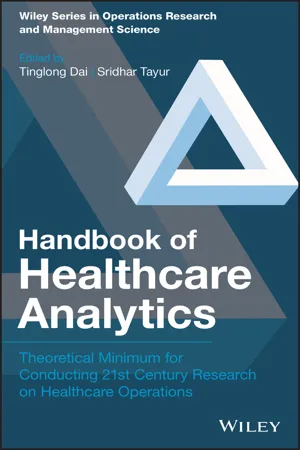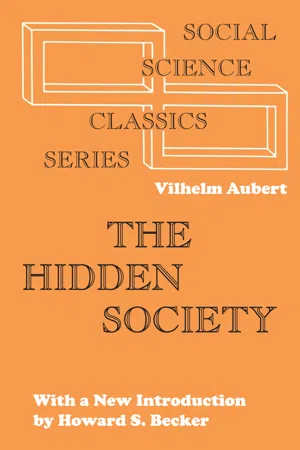Law
Competing Interests
Competing interests refer to situations where individuals or entities have conflicting interests or obligations that may impact their decision-making or actions. In the legal context, it often pertains to situations where a person's personal interests may conflict with their professional duties or responsibilities, potentially leading to ethical or legal challenges.
Written by Perlego with AI-assistance
Related key terms
3 Key excerpts on "Competing Interests"
- eBook - ePub
Scientific Integrity
Text and Cases in Responsible Conduct of Research
- Francis L. Macrina(Author)
- 2014(Publication Date)
- ASM Press(Publisher)
chapter 7Competing Interests in ResearchS. Gaylen BradleyIntroduction • Conflict of Effort • Conflict of Conscience • Conflict of Interest • Managing Competing Interests • Conclusion • Discussion Questions • Case Studies • ResourcesIntroduction
As in any profession, scientists encounter situations in which financial or various other personal considerations come into competition with one another or with the interests of their employers. This competition may create an untoward conflict that may compromise or appear to compromise the judgment of the scientist. Improperly managed Competing Interests may bias or have an inappropriate impact on proposing or performing research, reviewing research, reporting research results, or participating in research training.These Competing Interests are frequently labeled “conflicts of interest.” Legally, this phrase is used to cover a broad spectrum of situations all of which are characterized by the possibility of receiving something of financial or personal value that, in turn, may introduce bias or corrupt the judgment of the scientist. Some federal funding agencies have sought to clarify this terminology, using the phrase “financial conflict of interest.” Competing Interests also extend beyond the sphere of direct financial gain, and scientists must be aware of and deal with the dilemmas that such situations create. These fall into two additional areas called “conflict of effort” and “conflict of conscience.”Competing Interests permeate the science enterprise and must be addressed to ensure the responsible conduct of research. Rule makers usually expand guidelines and regulations to preserve the integrity of the scientific record and the trust of those who utilize the product of science to include the appearance or perception of private or personal interests that might compromise objective judgment and professional practice. Governmental agencies have enacted laws and promulgated rules in order to reassure the sponsors of research and the consumers of scientific results that the data, interpretations, and recommendations are free of bias. These laws and rules constitute the framework within which science operates. Various constituencies of the scientific community may set higher or more restrictive standards than the mandated minimal standard of conduct. The legal framework that governs conflicts of interest focuses primarily on financial conflicts of interest, although competition for prestige may equally influence the decisions of a scientist. Conflict of interest is not derived from moral intuition but is a relatively recent ethical category, having been introduced in the 1930s and first appearing in a court decision in 1949. The scope of conflict of interest is still evolving, and it is a situation in which all scientists are enmeshed. There is a pervasive, innocent view that all conflicts of interest must be avoided or eliminated in science, a so-called zero tolerance level. Having a conflict of interest does not mean a lack of integrity nor constitute corruption, but it requires actions to maintain trust and confidence that the scientific record and practice are reliable. Each dilemma has unique elements, and one size does not fit all in identifying, minimizing, and governing potential breaches in research integrity. - eBook - ePub
Handbook of Healthcare Analytics
Theoretical Minimum for Conducting 21st Century Research on Healthcare Operations
- Tinglong Dai, Sridhar Tayur(Authors)
- 2018(Publication Date)
- Wiley(Publisher)
With regard to the former, there is little question that Competing Interests are detrimental and can pose immediate danger to patient health and safety, for example, if a physician chooses to conduct a risky medical procedure out of financial considerations instead of the concerns for patient's well‐being. In the long run, Competing Interests can be more broadly damaging, by eroding patients' confidence and trust in healthcare providers and institutions. On the other hand, even though the detriments of Competing Interests are clear, a simple solution to this problem has been elusive. A major hurdle is the fact that Competing Interests are often difficult to conclusively determine and, consequently, harder still to manage. One reason is that even though evidence‐based medicine has been practiced since the early 20th century and accelerated since the 1970s (Claridge and Fabian, 2005), modern medicine still relies heavily upon the subjective expert judgment on the part of the physician. As Lisa Rosenbaum, a cardiologist at Brigham and Women's Hospital in Boston and national correspondent for the New England Journal of Medicine, notes, “[there is] tremendous uncertainty upon which most of medicine is practiced—an uncertainty that eludes hard and fast rules governing” (Rosenbaum, 2013). Competing Interests in healthcare have been studied extensively, in part because of their importance and the managerial challenges that they bring. This chapter reviews some of the representative research on this subject and has two main objectives. First, this chapter aims to provide readers with a broad overview of the research on Competing Interests at various points along the healthcare supply chain. We endeavor to fulfill this objective in section 4.2 by conducting an extensive review of key research studies and providing an organizing framework for these studies - eBook - ePub
- J. E. Meade(Author)
- 2017(Publication Date)
- Routledge(Publisher)
The way in which society, through law, solves conflicts of interest is such that the parties will often find it advantageous to go on with a negotiation in a spirit of compromise. The legal solution, in common with the solution which accident, fate, or ill will may give to a transaction, tends to ignore von Neumann’s “minimax principle” and gives all to one party. But it is typical of many such cases that although one of the parties may stand to gain by rejecting compromise, it is uncertain which party it will be. Therefore the one who wants to be sure that he will not lose everything will also make some compromise in conflicts of this kind where something has gone wrong, thus preventing that both sides may change the situation to their advantage. We shall deal later with the problem of why legal solutions have this all-or-none character, and why it is that some people prefer such solutions in spite of the strong reasons for avoiding maximum loss. The first problem is the question of why we have courts, and the second, why anyone should want to make use of them.DissensusCompeting or contrasting interest does not in itself imply any disagreement between Ego and Alter concerning values. It may even be claimed that a conflict of interest presupposes a consensus, at least on the value of the good which is sought after by both parties. Let us assume that the object of the interest conflict is a position of leadership or superior rank within a group. Such a conflict can arise only if the contestants agree that incumbency of the position has value. The case of sexual rivalry may be even more to the point. Often the area of consensus is sharply limited. But its very presence as a condition of any interest conflict is significant, as it does, paradoxically, draw together the conflicting parties. In this sense a conflict of interest is less fundamental than certain conflicts of values, in which the opponents perceive each other as the embodiment of evil. Interest conflicts emphasize the similarity of the contestants, their common needs and aspirations. In this lies, no doubt, one reason why politicians who compete fiercely with each other for office nevertheless often get along very well. It seems as if this particular kind of inverse interplay between interest conflict and value conflict serves as a major brake on the outward and destructive manifestations of both kinds of conflict. For it also works the other way around. A profound conflict of values will tend to keep the antagonists apart. They do not value the same things and tend therefore to encounter each other less frequently than would otherwise have been the case.
Learn about this page
Index pages curate the most relevant extracts from our library of academic textbooks. They’ve been created using an in-house natural language model (NLM), each adding context and meaning to key research topics.


